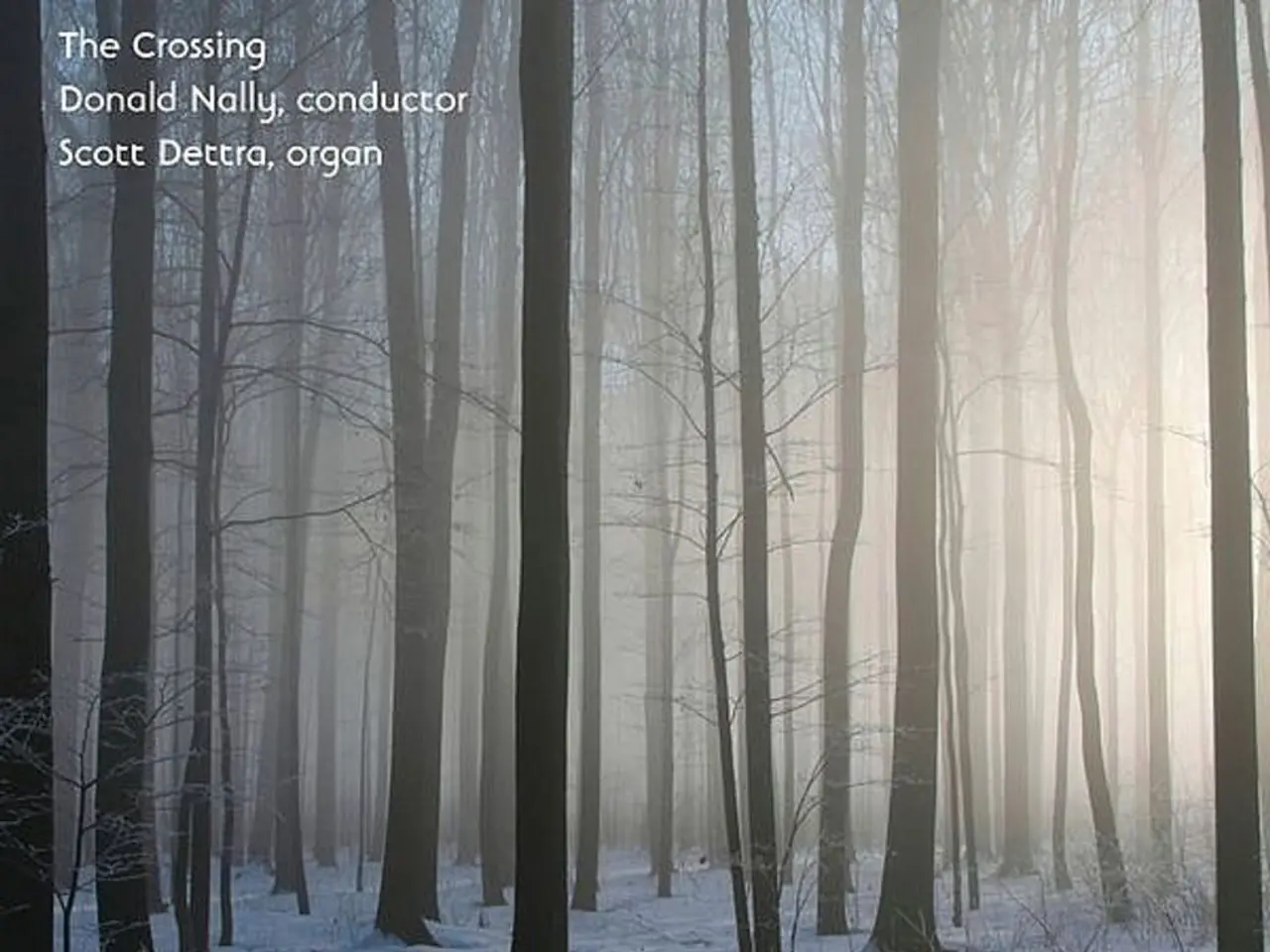Strategies for Winter Gardening: Managing Winter Burn and Frost Injuries in Plants
In the colder months, plants face various challenges that can lead to damage. Understanding these issues and taking preventive measures can help your garden thrive even in winter.
Preventing Winter Damage
To protect plants from winter's harsh conditions, employ physical protections such as covering young shrubs or seedlings with blankets to trap ground heat, which can safeguard plants down to about 12–20°F (-11 to -7°C). Mulching with 2–3 inches of pine straw or similar material helps insulate roots and retain soil moisture, reducing frost damage. For fruit trees and more delicate plants, spraying water during freezing nights forms a protective ice layer that releases heat when freezing, keeping plant tissues slightly warmer [1].
In controlled environments like greenhouses, managing temperature fluctuations with insulation (e.g., white poly coverings) and venting helps plants remain dormant longer and avoid cold injury due to premature warming and refreezing cycles [3].
Recovering from Winter Damage
Should your plants suffer winter damage, pruning away obviously dead or damaged foliage is essential to prevent disease and encourage new growth. Ensure proper watering—adjust to the plant’s needs without overwatering—and consider repotting with fresh soil if root damage is suspected [2]. Maintain a stable environment with appropriate light and temperature, avoiding frequent movement or disturbance while plants recover [2][4].
Monitor for new shoots or leaves as indicators of recovery, and have realistic expectations since severely damaged plants may not recover fully [2]. Additional practical tips include laying tall plants down on the ground and covering them with mulch to use the warmer soil temperature [1], and for annually overwintered perennials, ensuring they receive sufficient cold exposure (below 40°F / 4°C for 6–10 weeks) to satisfy dormancy requirements without damage [3].
Identifying and Preventing Specific Winter Damages
- Signs of frost damage include browning of new growths, dead or dying buds, delayed leaf development, or blackened leaves. To prevent frost damage, harden off plants early in the season, time pruning well, use organic fertilizer, and avoid pruning too early in the spring [2].
- Winter sunscald is an injury that occurs when the tree bark cracks due to sudden temperature changes, leading to discolored fissures on dormant trees' barks. Protection from winter sunscald includes wrapping the trunks with burlap and other protective coverings, and leaving affected trees to heal on their own [5].
- Winter desiccation occurs when the amount of moisture that a plant absorbs is not enough to sustain it, leading to the plant drying out. Signs of winter desiccation include brittle or burned-looking foliage, dried leaves in places where the sun or wind hits, as well as browning on evergreens [4]. To prevent winter desiccation, water plants deeply and regularly before the winter season sets in, water during dry spells, and add a 2-3 inch layer of mulch to minimize evaporation [1].
In conclusion, by employing these strategies, you can minimize frost and freeze injury and give plants the best chance to recover after winter damage.
References:
[1] University of California Agriculture and Natural Resources. (2017). Protecting Plants from Freezing Weather. [online] Available at: https://ucanr.edu/sites/UCMANN/files/292212.pdf
[2] The Spruce. (2021). How to Prune and Care for Winter-Damaged Plants. [online] Available at: https://www.thespruce.com/how-to-prune-and-care-for-winter-damaged-plants-1421238
[3] Michigan State University Extension. (2018). Protecting Plants from Winter Injury. [online] Available at: https://www.canr.msu.edu/news/protecting_plants_from_winter_injury
[4] The Old Farmer's Almanac. (2018). Winter Plant Care: Preventing and Treating Winter Desiccation. [online] Available at: https://www.almanac.com/content/winter-plant-care-preventing-and-treating-winter-desiccation
[5] University of Illinois Extension. (2019). Winter Sunscald on Trees. [online] Available at: https://web.extension.illinois.edu/cfivt/blog/2019/01/17/winter-sunscald-on-trees/
Here are the sentences containing the given words:
- Maintaining a home-and-garden lifestyle throughout the colder months requires understanding and tackling challenges such as frost damage.
- Engaging in gardening during winter can yield surprising results, especially if you properly mulch your plants and protect them with blankets to retain soil moisture.





